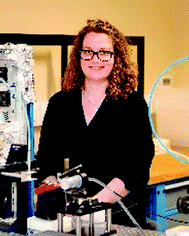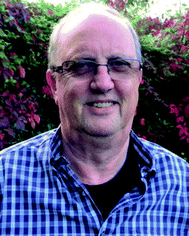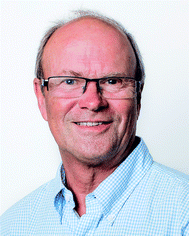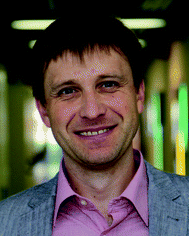Overview of the third International Glow Discharge Spectroscopy Symposium
The third International Glow Discharge Spectroscopy Symposium (IGDSS2016) was held in the Hard Days Night Hotel in Liverpool, UK, in April 2016. It was organised by the European Working Group for Glow Discharge Spectroscopy (EW-GDS), with the organising committee headed by EW-GDS chair Peter Robinson, ably supported by his colleagues Arne Bengtson and Petr Smid. It was a successful three-day meeting attended by scientists from 20 different countries, showing that interest in the technique is still very strong. Most pleasing was the number of fresh-faced young researchers whose knowledge and enthusiasm shows that the future of GDS is in good hands!There were three keynote lectures given by invited speakers from the USA, Spain and Japan, reflecting the international flavour of the symposium. There were also twenty oral presentations and sixteen posters. The work was split between optical spectroscopy, the more traditional source of work, and the developing area of mass spectrometry. The analytical content covered bulk analysis, depth profiling and some innovative applications making use of modified types of glow discharge sources.
In optical emission techniques, several contributions covered a wide range of topics ranging from fundamental studies of plasma processes to new industrial applications.
Detailed studies of the role of metastable levels in various carrier gases for excitation of analyte atoms increase our understanding of the processes in a glow discharge. Studies of molecular emission in the initial stage of the plasma formation allow us to make better background corrections for more accurate thin film measurements. Fundamental studies like these of the physics and chemistry of the glow discharge pave the way for the design of improved glow discharge sources in the near future. Also related to future development of more effective sources, are studies of the characteristics of sources designed for ultrashort μs pulses.
Moving towards practical applications, work presented on refinement of the widely accepted “standard model” for quantification of compositional depth profiles (CDP) is very important for the ever growing number of industrial applications. Several examples of such applications related to high-tech material development, e.g., solar panels and lightweight batteries were presented, showing that an increasing number of industries have found GD-OES to be a very useful tool both for R&D and quality control.
A couple of novel technologies to extend the capability of GD-OES were also presented. One highly interesting development is the combination of large GD sources combined with advanced optics for very fast surface elemental mapping, potentially a breakthrough technology soon to become commercially available. Another very exciting development, recently made commercially available, is advanced laser interferometry allowing measurement of sputtering depth in real time.
Equally the mass spectrometry papers presented at IGDSS2016 covered various topics including the latest instrumentation developments, the innovative analytical applications of this technique but also new results of the fundamental studies. Both currently available GD-MS arrangements – sector field and time of flight – were represented in the talks.
Although the GD-TOFMS instrumentation with pulsed RF excitation and its applications have been presented at previous scientific meetings, papers presented at this symposium showed that this relatively new technique can still offer new analytical possibilities. This confirmed a wide range of analytical applications given in one invited and one oral talk. Further results of studies of various regions of the RF pulse and the application of these results in optimising the sensitivity of various atomic and molecular species in depth profile analysis of ultra-thin multi-layers were presented.
Experience with the first commercial GD-TOFMS instrument PP-TOFMS™ was also the topic of one of the oral presentations, and the comparison with the previous prototype instruments was very useful for the GD community. Indeed, not only the advantages of this analytical technique were reported but also the aspects where further developments and improvements are necessary. These include the necessity of establishing reliable quantification methods for the depth profile analysis, improvement of sensitivity and reduction of background from non-metallic elements.
Some of the intrinsic limitations of GD-TOFMS were addressed in a further oral presentation where two alternative modifications of TOFMS – distance-of-flight MS and zoom-TOF – were shown and their pros and cons were discussed.
Further instrumental developments were also presented by three main manufacturers of sector field GD-MS instruments, which included automatization concepts as well as implementation of micro-second pulsed discharges.
Two oral papers reported on analytical applications of GD-MS in metrology. In general, advantages of this direct solid state ultra-trace analytical technique for metrological needs were shown together with the drawbacks related to the measurement uncertainty. Indeed, the requirements on measurement uncertainty in metrology are very high and the lack of suitable reference materials and the limitations of the concept of Standard Relative Sensitivity Factors (StdRSF) are the main obstacles in more intensive use of GD-MS in metrology. Several calibration concepts were presented and one very interesting application of GD-MS in ‘Avogadro’ project was discussed.
The calibration concepts, and in particular the concept of standard and matrix specific RSFs, were addressed by several authors from industrial analytical laboratories. Practical examples of RSF determination as well as factors limiting the matrix-independent nature of the StdRSF concept together with the factors influencing the variations of the standard and matrix specific RSFs were reported.
Last but not least, it was shown that the sector field GD-MS can be utilised in fundamental studies of analytical glow discharges. Ongoing investigations of the effects of molecular gases on plasma processes taking place in the analytical glow discharges were complemented by the GD-MS results obtained with argon and neon plasma gases.
2016 Payling Prize.
Given in memory of the late Dr Richard Payling, this prize recognises the quality of the work presented by young scientists at the conference. In 2016, it was decided that the prize should be presented to Laura Chauvet from the University of Toulouse for her work with the dielectric barrier discharge source.Next meeting.
The fourth IGDSS will be held in Berlin, Germany, in the week of 16th April, 2018. Details will be published as they become available on the EW-GDS website at http://www.ew-gds.com.Many thanks from the conference organisers,
Peter Robinson
Arne Bengtson
Petr Smid
| This journal is © The Royal Society of Chemistry 2016 |




